By Nicole Kessler
Scaling up Mount Kilimanjaro in Tanzania is no easy feat.
It’s an extreme altitude mountain trek. It takes hikers through five different ecological zones, from farmland to alpine desert to snow capped arctic peaks. Temperatures can reach an upwards of 104 degrees and at night drastically drop between 20 to -20 degrees Fahrenheit, not including windchill. People can start experiencing acute mountain sickness symptoms as low as 8,000 feet and, as one enters the higher altitude zones, limited oxygen begins to impact one’s physiology, officially making the experience empowering yet treacherous.
Now, imagine ascending to the top at 64 years old.
Hamden resident Lew Nescott is taking on this challenge wholeheartedly. He flew out on Feb. 18.
In order to reach the top of the 19,341-foot summit, the body has to train itself, physically and mentally, to adapt to change. He felt the Frank H. Netter MD School of Medicine at Quinnipiac University would be the perfect place to help him get back into tip top shape.
Nescott reached out to Bruce Koeppen, the dean of the school of medicine, about wanting to team up for this project. Koeppen then reached out to the biomedical sciences professor Tom Martin.
Martin said, “yeah, let’s give this a try,” and then blasted a call out to the first-year medical students to see who was interested in taking on such a project— perhaps as the student’s required capstone project.
Katherine Woolley was the first to jump on the offer.
“Oh, I hopped on it,” she said.
You can say it was fate.
“I was really excited about it,” Woolley said. “Honestly it seemed too good to be true.”
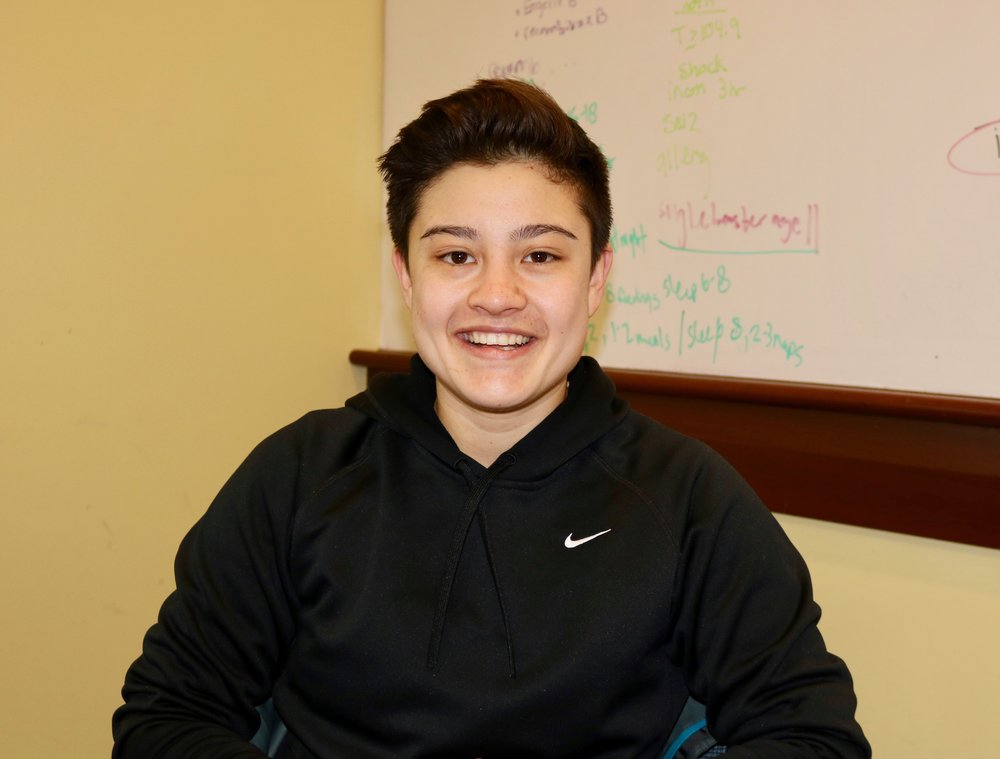
Katherine Woolley
Woolley is a bright-eyed 23 year old from Denver, Colo. She is an avid rock climber, hiker and snowboarder who loves the outdoors and nature. Having done undergrad at the University of Colorado Boulder, studying Integrative Physiology with an emphasis in exercise science, she knew that Quinnipiac University, nestled in between Sleeping Giant State Park, was the perfect choice for med school.
“The facilities are beautiful and the professors are amazing,” she said.
The year before she moved out to the East Coast, Woolley took a gap year, hiking all over Southeast Asia for three months, developing an appreciation for what the human body is capable of. She explored Thailand, Laos, Malaysia, Nepal and India.
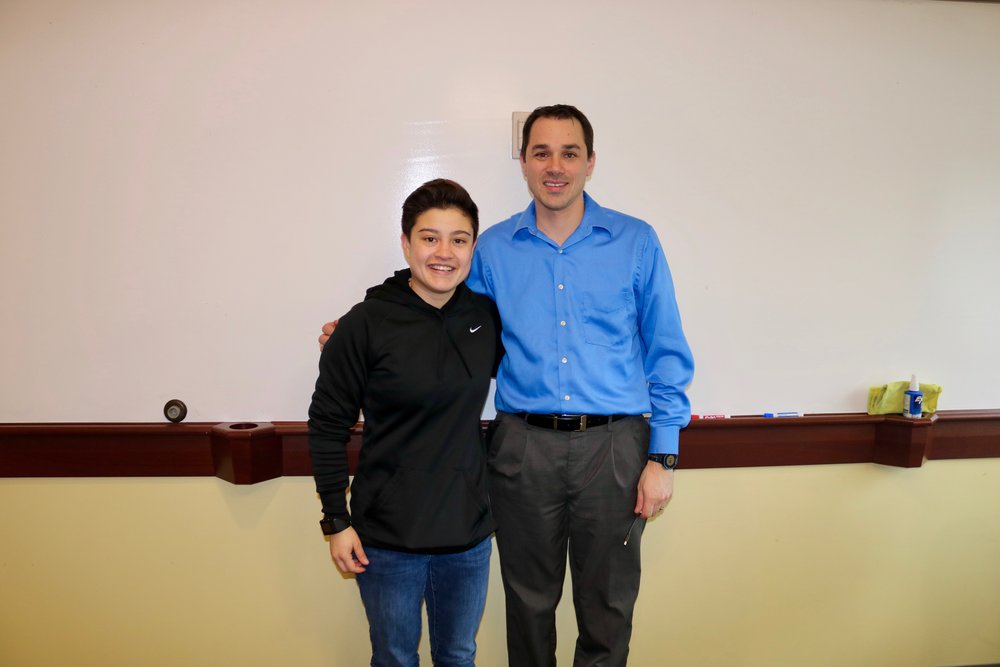
Woolley and Professor Martin
“I did some high altitude trekking in Nepal, which is where I kind of had my first idea of making my capstone project involving high altitude and mountaineering,” she said. “It’s such an interesting culture there.”
The entire infrastructure of Nepal is based on Nepali Sherpas taking tourists up different mountains that normally one couldn’t do on their own.
“I thought it was so interesting that this 5-foot-2 tiny man can carry like 200 pounds on his back and run up the mountain and all these big buff tourists are struggling to catch their breath,” she said.
Nescott’s request couldn’t have aligned better with Woolley’s curiosity and career aspirations.
“This project is so multifaceted,” she said. “Not only are we helping a master’s athlete who came out of a retirement for a climb to do something amazing, but he’s doing it all for charity.”
Woolley said that working with Nescott has been inspirational and that he is motivated, hard working and doing this from the bottom of his heart. Nescott is funding his trip all out of pocket. All the money raised will go directly to the Sarah Foundation, which provides programs and services for people with intellectual and other disabilities who live in Connecticut.
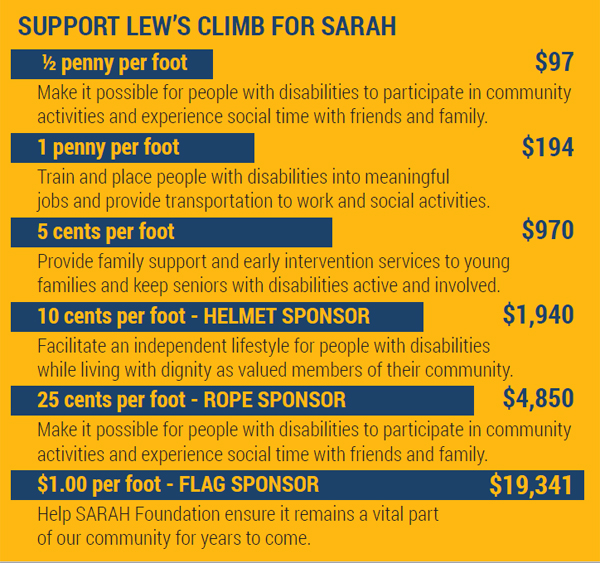
According to the foundation’s website, Nescott said this climb is personal. He is climbing for Sarah, as well as his cousin, George or “Geo.”
“I think this goes to show you that if Lew can come out of retirement, hike to the top of Mount Kilimanjaro, then anyone in the Sarah Foundation, anyone anywhere, if you are down on your luck, if you are turning over a new leaf, you can do anything you set your mind to,” Woolley said.
“It’s been a real honor to work with him and everything that this climb stands for.”
Nescott started to ascend to the top of the mountain on Feb. 20 or Feb. 21, but in order to prepare, Woolley and Martin devised a strategic plan for Nescott to help him through the harsh conditions.
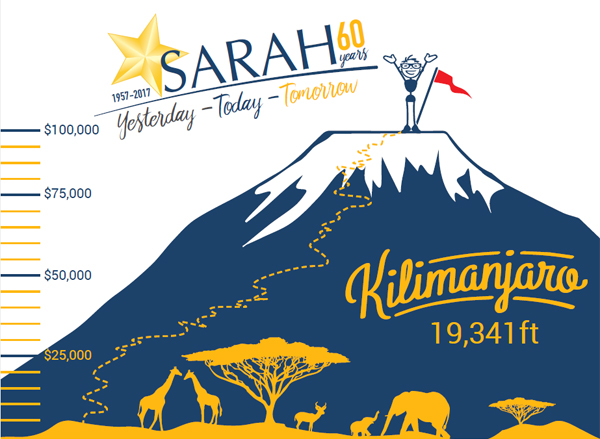
Even though Nescott is an experienced climber having previously scaled three of the seven highest mountains in the world, he still needs to train and prepare for that high hypoxic environment.
“We came up with high intensity interval training, which has been shown to improve your cardiovascular fitness very efficiently,” Woolley said. “You can go for like an hour jog or you can do a 30 minute HIIT routine and you’d be sucking in a lot more air after the HIIT routine.”
The program also has different measures of heart rates that they want Nescott to hit. He has his own monitor with a watch he wears so he knows what beat per minute he needs to be at and for how long. These exercises can be done on his own, which is something Woolley thought was important.
“It’s a pretty strict exercise regiment,” she said. “Now he has the equipment to really workout properly.”
Testing began eight weeks ago before training started in the Motion Analysis Laboratory.
The work doesn’t end when Nescott returns from Africa on March 1.
From the plane, he will head to Quinnipiac and, on March 2, the rest of the data will be collected and they will begin to see how the operative outcome affected a bunch of the different variables.
“And on top of that, we have data we are collecting while he is climbing,” she said. “So he is wearing a bio strap. It’s going to be collecting heart rate, heart rate variability, temperature, activity level and GPS, all that kind of stuff. He is going to be wearing a pulse oximeter, O2 saturation…”
Woolley though is most excited about the video interviews Nescott will record, answering questions like: How nauseous are you? How are you sleeping? How are you eating? This is all to see if Nescott is getting altitude sickness.
Woolley will be able to see his cognitive abilities, how he is talking and how he looks. She also has him doing ataxia exams, heel to toe walking and a stroope test for air detection.
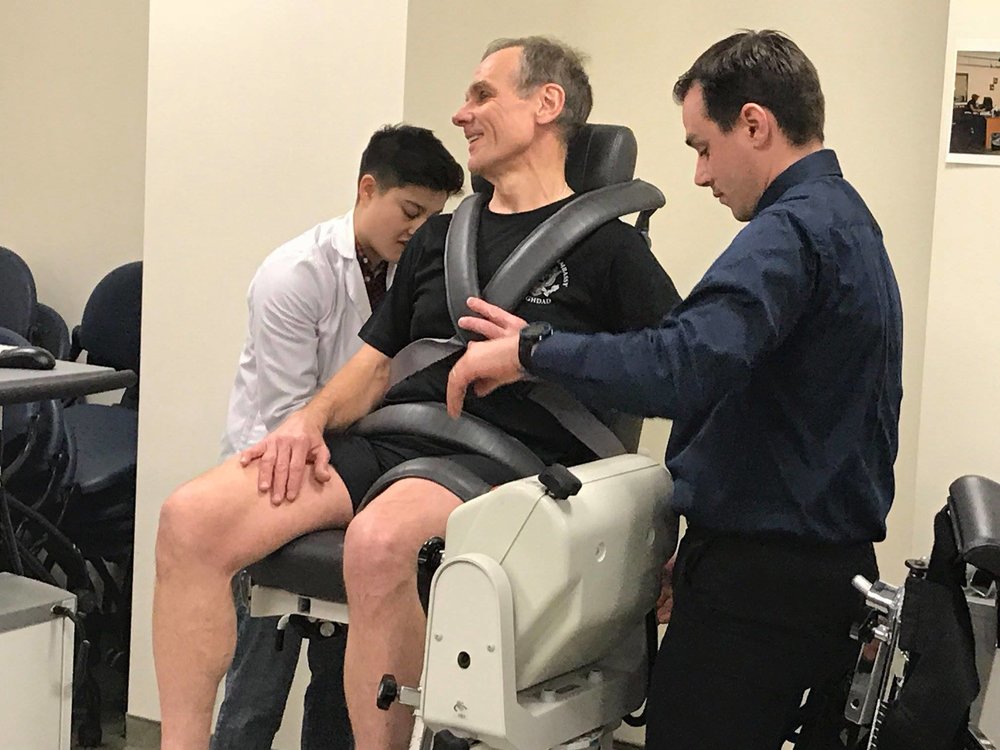
Nescott during one of the tests (Source)
“The whole idea of all the senses is so we can recreate this climb from a data standpoint,” Martin said. “This is how he went from this elevation, how the heart rate and body temperature changed …that kind of stuff.”
Whooley said it may seem like a niche study, but there really isn’t any other data on anyone like Nescott out there.
“It’s a great opportunity for Katherine and the learning for the school of medicine students,” Martin said. “It’s also a way to help advance science potentially. To kind of get an idea of how athletes can respond to the altitude, it benefits the community, it benefits Lew, it benefits the foundation, it benefits the students and it also has the ability to potentially help the sciences. It hits all those landmarks.”
The research isn’t even close to being done yet, but Woolley is thankful for the opportunity.
“I am really grateful for Lew, the foundation is awesome, the school has been very supportive and Dr. Martin has been the best mentor ever,” she said. “He’s even teaching me an independent study, which is something he is doing out of his own free time.”